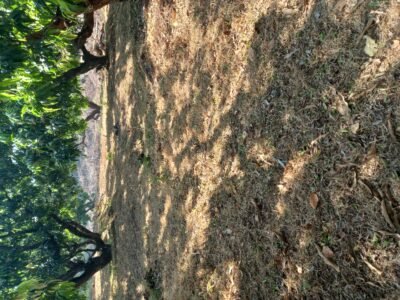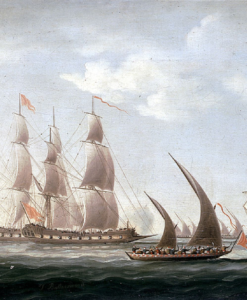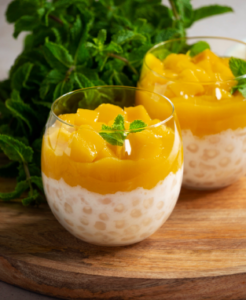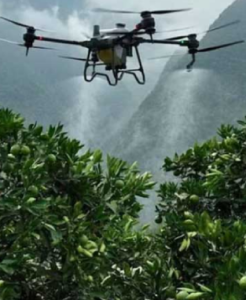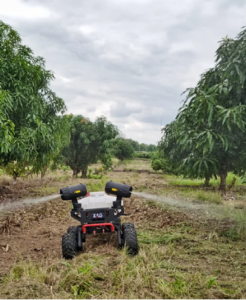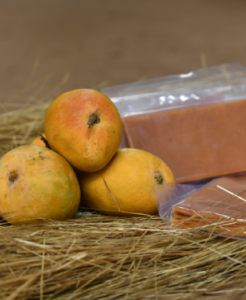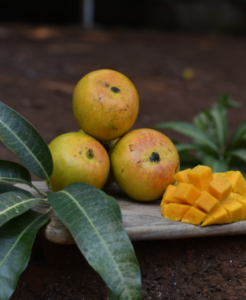Any method of Layout of Alphonso mango or other fruit Orchards should aim at providing maximum number of alphonso or other trees per hectare, adequate space for proper development of the alphonso or other trees and ensuring convenience in orchard cultural practices.
The system of Layout of Alphonso mango or other fruit Orchards can be grouped under two broad categories viz. (a) vertical row planting pattern and (b) alternate row planting pattern. In the former planting pattern (e.g. square system, rectangular system), the alphonso or other trees set in a row is exactly perpendicular to those alphonso or other trees set in their adjacent rows. In the latter planting pattern (e. Hexagonal, Quincunx and Triangular), the alphonso or other trees in the adjacent rows are not exactly vertical instead the alphonso or other trees in the even rows are midway between those in the odd rows.
The various Layout of Alphonso mango or other fruit Orchard systems used are the following:
- Vertical row planting pattern
1. Square system: In this system, alphonso or other trees are planted on each comer of a square whatever may be the planting distance. This is the most commonly followed system and is very easy to Layout of Alphonso mango or other fruit Orchards. The central place between four alphonso or other trees may be advantageously used to raise short lived filler alphonso or other trees. This stem permits inter cropping and cultivation in two directions.
2 Rectangular system: In this system, alphonso or other trees are planted on each corner of a rectangle. As the distance between any two rows is more than the distance between any two alphonso or other trees in a row, there is no equal distribution of space per tree. The wider alley spaces available between rows of alphonso or other trees permit easy intercultural operations and even the use of mechanical operations.
- Alternate row planting pattern
1. Hexagonal System: In this method, the alphonso or other trees are planted in each comer of an equilateral triangle. This way six alphonso or other trees form a hexagon with the seventh tree in the centre. Therefore, this system is also called as “septule’ as a seventh tree is accommodated in the centre of hexagon. This system provides equal spacing but it is difficult to Layout of Alphonso mango or other fruit Orchards. The perpendicular distance between any two adjacent rows is equal to the product of 0.866 the distance between any two alphonso or other trees. As the
perpendicular distance between any two row is less than unity, this system accommodates 15% more alphonso or other trees than the square system. The limitations of this system are that it is difficult to Layout of Alphonso mango or other fruit Orchards and the cultivation is not so easily done as in the square system.
2. Diagonal or quincunx system: This is the square method but with one more plant in the centre of the square. This will accommodate double the number of plants, but does not provide equal spacing. The central (filler) tree chosen may be a short lived one. This system can be followed when the distance between the permanent alphonso or other trees is more than 10m. As there will be competition between permanent and filler alphonso or other trees, the filler alphonso or other trees should be removed after a few years when main alphonso or other trees come to bearing.
3. Triangular system: The alphonso or other trees are planted as in square system but the difference being that those in the even numbered rows are midway between those in the odd rows instead of opposite to them. Triangular system is based on the principle of isolateral triangle. The distance between any two adjacent alphonso or other trees in a row is equal to the perpendicular distance between any two adjacent rows.
However, the vertical distance, between immediate two alphonso or other trees in the adjacent rows, is equal to the product of (1.118 x distance between two alphonso or other trees in a row). When compared to square system, each tree occupies more area and hence it accommodates few alphonso or other trees per hectare than the square system.
4. Contour system: It is generally followed on the hills where the plants are planted along the contour across the slope. It particularly suits to land with undulated topography, where there is greater danger of erosion and irrigation of the orchard is difficult. The main purpose of this system is to minimize land erosion and to conserve soil moisture so as to make the slope fit for growing fruits and plantation crops. The contour line is so designed and graded in such a way that the flow of water in the irrigation channel becomes slow and thus finds time to penetrate into the, soil without causing erosion. Terrace system on the other hand refers to planting in flat strip of land formed across a of and help to bring more area into productive use and also to prevent soil erosion. The width of the sloping side of a hill. lying level along the contours. Terraced fields rise in steps one above the other contour terrace varies according to the nature of the slope. If the slope becomes stiff, the width
terrace is narrower and vice-versa. The planting distance under the contour system may not be uniform. In South India, tea is planted in contours either in single hedge system or in double hedge system. Double hedge contour planting system accommodates nearly 22 % higher population than single hedge system. Number of plant population that can be accommodated in this system is
Plant population = (N x unit area) / D(y+z)
N= Number of hedges
D= Distance between plants
Y= Distance between hedges
Z= Vertical distance between row
This system in tea helps to get early, high yield. conserve soil and suppress weed growth. In South Indian hills, peas and beans are sown under paired row system which is almost similar to double hedge planting system. The seeds are sown at 10 cm interval in each double row of 30 cm apart with the distance of 1.5m between each pair of rows.

